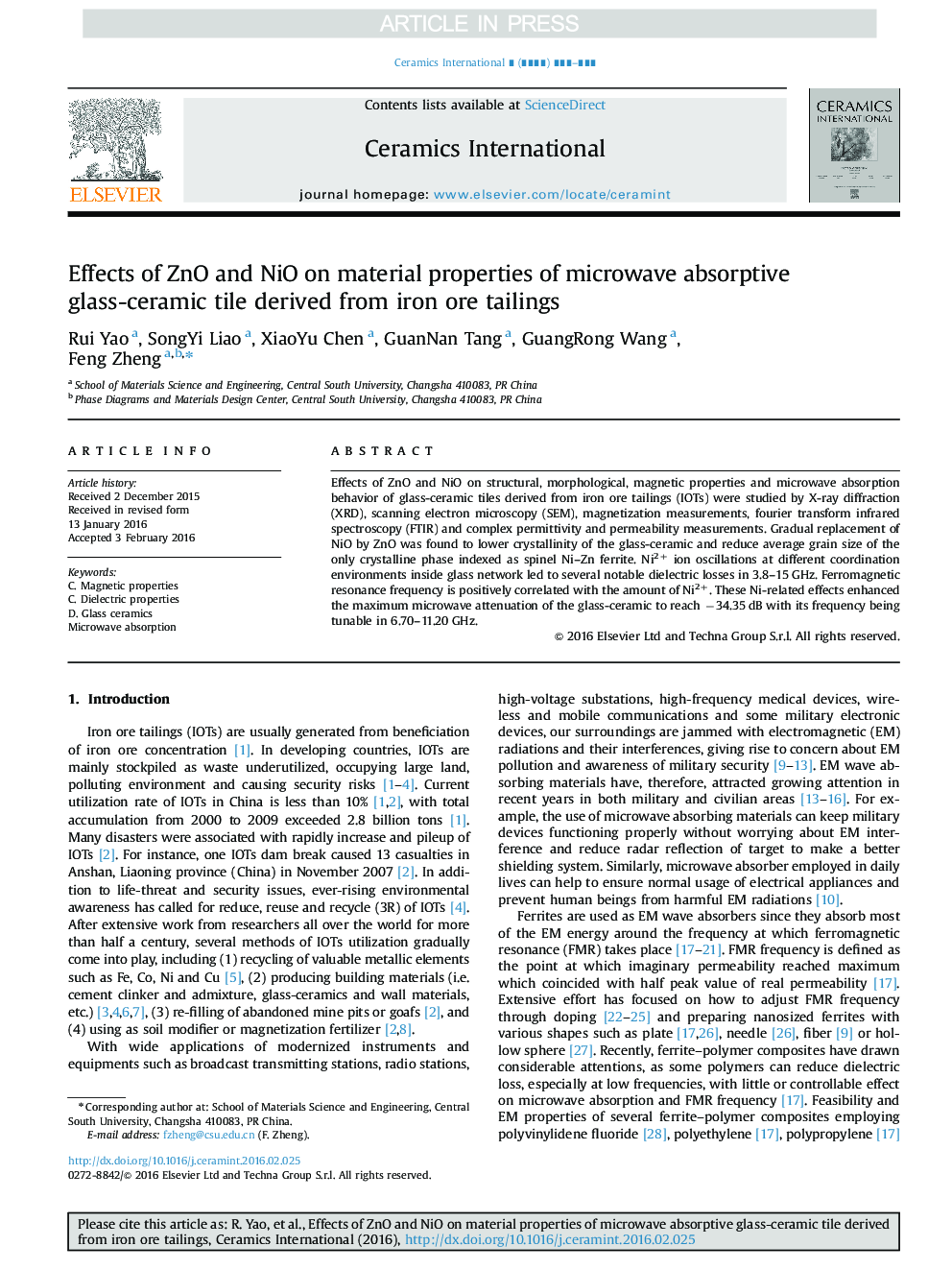| Article ID | Journal | Published Year | Pages | File Type |
|---|---|---|---|---|
| 10624162 | Ceramics International | 2016 | 11 Pages |
Abstract
Effects of ZnO and NiO on structural, morphological, magnetic properties and microwave absorption behavior of glass-ceramic tiles derived from iron ore tailings (IOTs) were studied by X-ray diffraction (XRD), scanning electron microscopy (SEM), magnetization measurements, fourier transform infrared spectroscopy (FTIR) and complex permittivity and permeability measurements. Gradual replacement of NiO by ZnO was found to lower crystallinity of the glass-ceramic and reduce average grain size of the only crystalline phase indexed as spinel Ni-Zn ferrite. Ni2+ ion oscillations at different coordination environments inside glass network led to several notable dielectric losses in 3.8-15Â GHz. Ferromagnetic resonance frequency is positively correlated with the amount of Ni2+. These Ni-related effects enhanced the maximum microwave attenuation of the glass-ceramic to reach â34.35Â dB with its frequency being tunable in 6.70-11.20Â GHz.
Related Topics
Physical Sciences and Engineering
Materials Science
Ceramics and Composites
Authors
Rui Yao, SongYi Liao, XiaoYu Chen, GuanNan Tang, GuangRong Wang, Feng Zheng,
